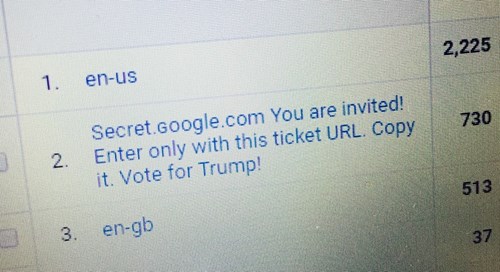Ghost spam and how to block it: what every marketer needs to know
15 March 2017
Ghost spam is a significant and growing problem in website analytics, but it’s an issue few digital marketers are aware of.
This spam shows up in Google Analytics as a visitor to your website. However, the hit isn’t from a real visit, it’s fake traffic sent in bulk to random Google Analytics profiles.
The good news: the spammers don’t access your site, so this doesn’t represent a threat to security. Instead, they send fake data to Google Analytics’ servers through Google’s Measurement Protocol, using randomly generated tracking codes to leave a trail of fake visits across many profiles.
The bad news: these fake visits pollute your reports and can significantly distort your data.

You could be making strategic marketing decisions based on inaccurate data - so you need to act now:
Firstly, review your Google Analytics data to understand if you’ve fallen victim to ghost spam. It can appear in almost any report within Google Analytics, however common locations in recent months include the Language and Site Content reports.
An example of ghost spam in the language report was the following entry that appeared frequently in the run-up to the US election.
Secret.ɢoogle.com You are invited! Enter only with this ticket URL. Copy it. Vote for Trump!
More recently, ghost spam has appeared in the site content report with the page title below.
google-liar.ru
Do not follow any links you see in these entries. While ghost spam itself does not represent a threat to your site’s security, following a link to a third-party website could leave you vulnerable to malware.
The second step is to block your ghost spam - and the only way to do this in Google Analytics is with filters.
While filters can block this spam, they only affect your data from the moment they are made active. Google Analytics data is permanent, and there is no way to edit it after-the-event, so if you wait until your data becomes polluted it is too late.
If you are experienced in Google Analytics, read the MOZ.com guide to blocking ghost spam. If you lack the expertise or understanding to implement such a filter, find an expert: this is something you need to get right.
If you plan to put these suggestions into practice, make sure to get in touch. We have a series of case studies that illustrate the benefits of a robust and proactive approach to analytics, and we would love to talk you through them.
